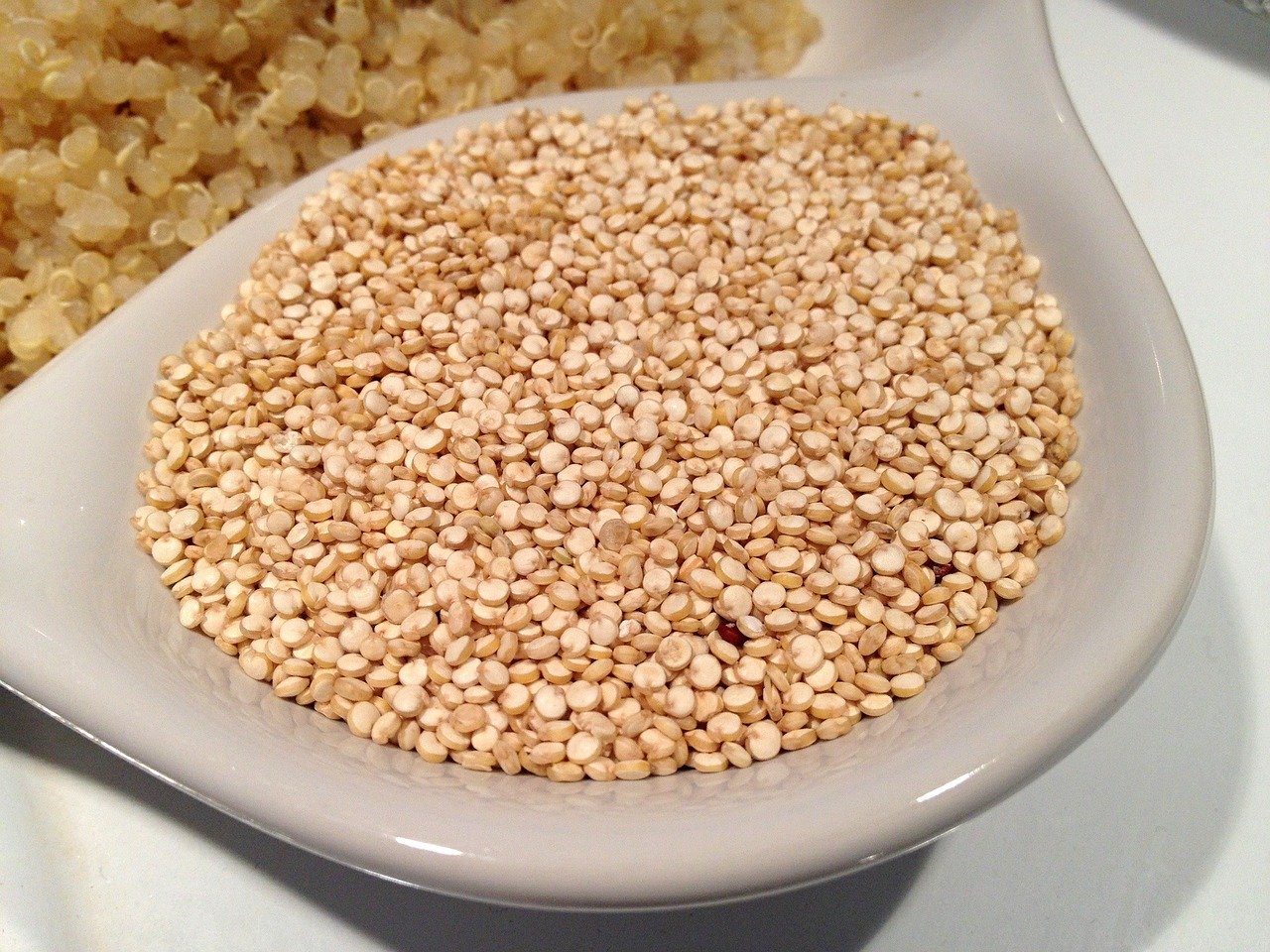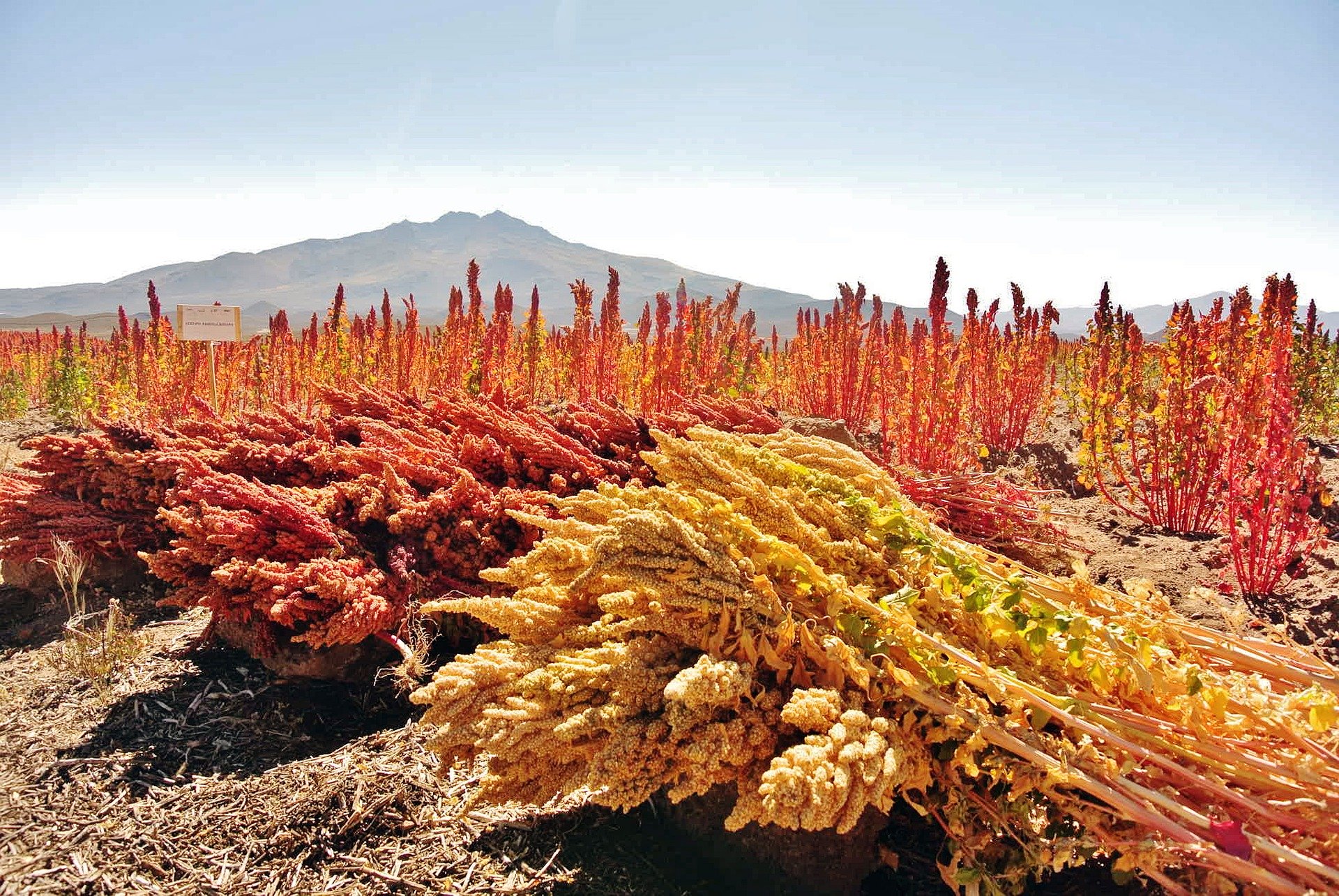
Quinoa (Chenopodium Quinoa)
Plant:
Quinoa is a herbaceous and annual plant that can reach 2 meters in height. The leaves of this plant are wide, of different shapes and its flowers are small, arranged in clusters, its seeds being abundant and small.
A native of the Andes, Quinoa has been a staple food of the indigenous peoples of this region for millennia. It is considered a pseudo-cereal and offers high nutritional values that can be compared to breast milk, it is no coincidence that in the Inca language it is called “mother seed”.
Its importance as a food has already led the Food and Agriculture Organization of the United Nations to declare, in 2013, “the International Year of Quinoa”.
It has also been considered by the United States Academy of Sciences to be the best food of plant origin for human consumption, including being part of the food of NASA astronauts who take very long journeys.
This superfood can take a transparent, yellow, orange, pink, red, purple, or black color (depending on the variety), gluten is not part of its nutritional properties, but more than 20 amino acids essential to the body that help to the recovery of tissues and cells in our body are part of it.
Properties:
Quinoa has properties such as analgesic, anti-inflammatory, anti-hemorrhagic, antioxidant, or wound healing, among others, and is rich in protein, fiber, magnesium, B vitamins, iron, potassium, calcium, phosphorus, vitamins. A quarter cup of dry quinoa contains approximately 160 calories, 2.5 grams of fat, zero grams of cholesterol and sodium, 27 grams of carbohydrates (3 grams of fiber and zero sugar), and 6 grams of protein.
Benefits:
- increases muscle mass,
- cholesterol,
- liver disease,
- osteoporosis,
- prevents degenerative imbalances,
- protects against heart and respiratory diseases, cancer and Alzheimer’s disease,
- free radicals,
- regulates the intestine,
- delays premature aging,
- symptoms associated with premenstrual tension and menopause,
- immune system,
- urinary system…
How to consume:
Quinoa has a delicate, slightly nutty flavor, and its color depends on the variety, it can be transparent yellow, orange, pink, red, purple, or black. Can be eaten raw or roasted, through seeds, flour, flakes, or oil. The leaves of the Quinoa plant are also edible, they taste similar to the leaves of spinach or beets.
Consumption of Quinoa can be made in salads, yogurts, juices, smoothies, fruits, and added to various savory dishes or in the dough of cakes and bread.
Quinoa is gluten-free and can be used, for example, as a substitute for rice or wheat.
This plant is also used in soaps, shampoos, and other products related to cosmetics.
Contraindication:
Quinoa’s consumption can cause changes in the gastrointestinal tract with an impact on the absorption of certain nutrients, causing gas, abdominal bloating, and stomach pain. To avoid this type of situation, it is sufficient to demolish the grains, for 15 minutes, before cooking them.
This text is an awareness. Depending on the season and the moment in which you are, it is up to each being to decide whether to eat this food. The dosage and frequency depend on the nature and physical condition of each Human Being.

Know more about Quinoa on:
Seeds are sources of life, but pay attention to its energy validity




